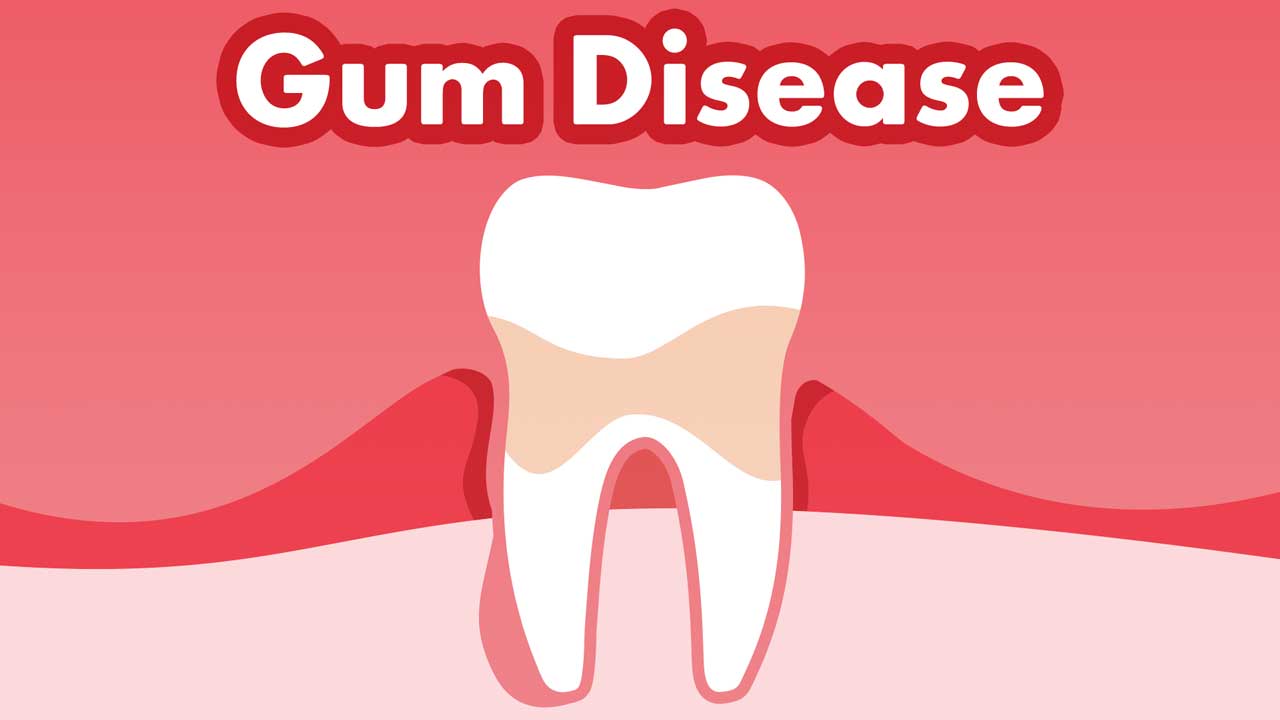Most people experience gum disease at some stage of their lives (Better Health Channel 2022).
Ensuring that your patients maintain good oral hygiene and helping to provide oral care when required are crucial in preventing potentially irreversible damage.
What is Gum Disease?
Gum disease occurs when the gum (gingiva) - the mucosal tissue surrounding and protecting the teeth - becomes infected and inflamed (Cleveland Clinic 2023; Healthdirect 2023).
What Causes Gum Disease?
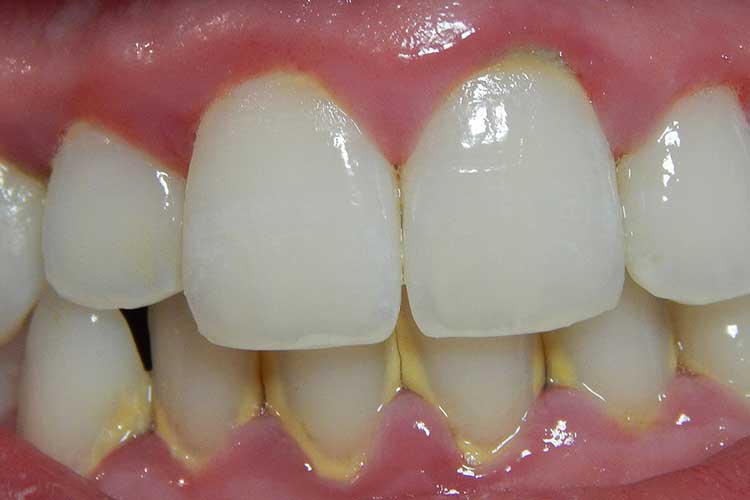
Gum disease is usually caused by plaque, a sticky coating of bacteria that accumulates on the teeth along the gum line and causes irritation. The immune system triggers an inflammation response in order to remove this bacteria, leading to symptoms such as redness, swelling, tenderness and bleeding (Better Health Channel 2022; Queensland Government 2022).
Every person naturally carries bacteria inside their mouth. These bacteria feed on the sugars in foods and drinks that the person consumes. As a result, plaque is continuously formed, providing millions of bacteria with an environment to live and multiply in (Better Health Channel 2022; Queensland Government 2022).
If plaque is not brushed off, it can harden into calculus (also known as tartar), which cannot be removed with a toothbrush alone (Healthdirect 2023).
In addition to poor oral hygiene, gum disease may also be caused by:
- Systemic disorders, including diabetes and leukaemia
- Exposure to heavy metals
- Pellagra (vitamin B3 deficiency)
- Scurvy (vitamin C deficiency)
- Skin disease, including erosive lichen planus.
(Wu 2015)
Risk Factors for Gum Disease
- Smoking
- Illicit drug use
- Stress
- Immunocompromise
- Viral or yeast infection
- Xerostomia (dry mouth)
- Certain medicines, including:
- Antihistamines
- Antihypertensives
- Chemotherapy medicines
- Immunosuppressive medications
- Oral contraceptives
- Bisphosphonates and monoclonal antibodies
- Genetic predisposition
- Poor nutrition
- Poorly-fitting dental restoration
- Pregnancy
- Puberty.
(Healthdirect 2023; Better Health Channel 2024; Wu 2015)
Stages of Gum Disease
There are two main stages of gum disease:
- Gingivitis
- Periodontitis.
(Healthdirect 2023)
Gingivitis
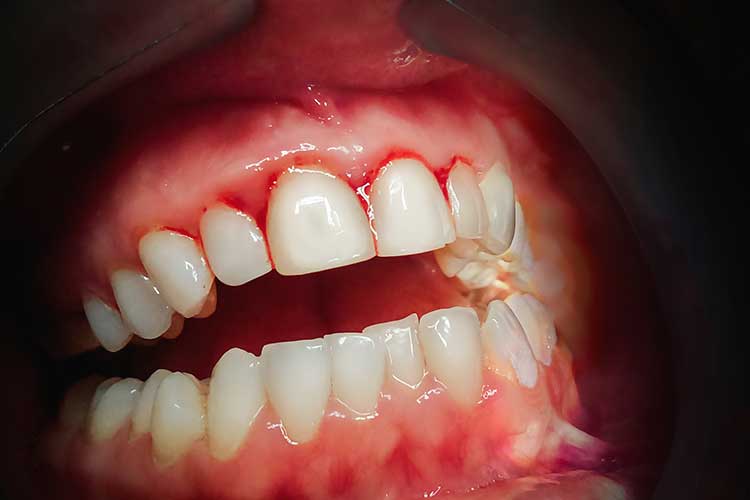
Gingivitis is an early stage of gum disease that affects the superficial gum layers, particularly around the gum line. The deeper parts of the gum, teeth and bone are not yet affected (Better Health Channel 2022).
Symptoms of gingivitis may include:
- Puffy, swollen gums
- Dusky red colouration of the gums
- Gum tenderness
- Gum bleeding
- Bad breath.
(Wu 2015)
Gingivitis is reversible. Treatment involves plaque removal, which should be performed as soon as possible in order to avoid complications and prevent disease progression (Healthdirect 2024).
About 22% of children (aged 5 to 14) and 29% of adults have gingivitis (AIHW 2024).
Periodontitis
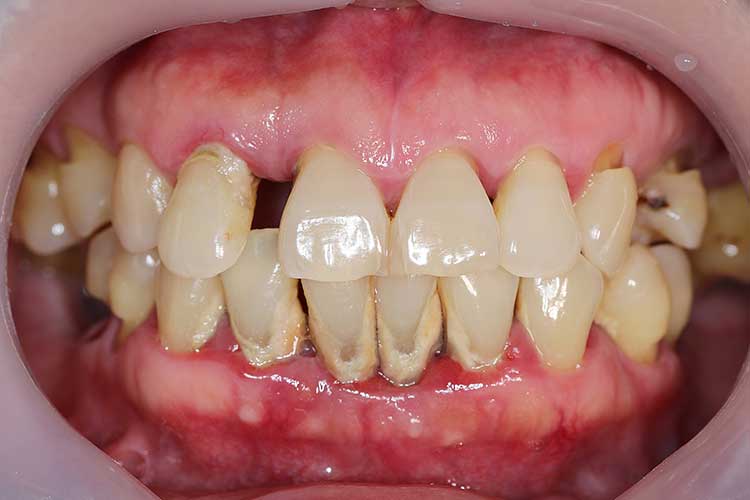
Periodontitis is an irreversible, more serious stage of gum disease that occurs when gingivitis is left untreated (Queensland Government 2022).
Periodontitis is an inflammation of the periodontium - the group of structures responsible for keeping the teeth in place. These structures include the cementum (tooth root covering), alveolar bone and periodontal ligament (fibres connecting the root of the tooth to the bone) (Better Health Channel 2022; InformedHealth.org 2023).
The periodontium is protected by the gum, which forms a seal around the neck of each tooth. However, if this seal is damaged by gum disease, periodontal pockets (spaces between the gum and the tooth roots) may form and trap bacteria. Gradually, the space between the gum and the tooth roots may increase and potentially lead to permanent bone loss (Better Health Channel 2022).
If left untreated, this cumulative damage to the periodontium may become so severe that the teeth loosen and need to be removed (Better Health Channel 2022).
Symptoms of periodontitis may include:
- Gum swelling
- Gum tenderness
- Gum bleeding
- Receding gums
- Bright red or purplish colouration of the gums
- Bad breath
- Unpleasant taste in the mouth
- Tenderness when biting
- Loose teeth or movement of teeth
- Newly formed spaces between teeth
- Pus between the teeth and gums.
(Better Health Channel 2022; Wu & 2015)
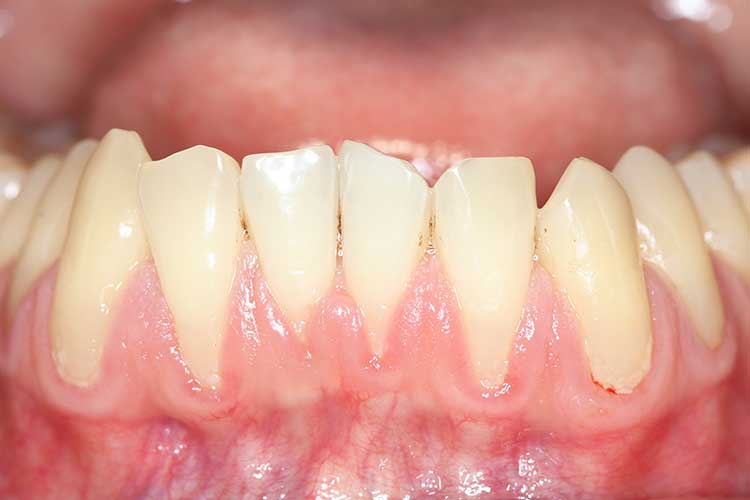
Periodontitis is associated with complications such as:
- Tooth loss
- Increased risk of cardiovascular disease, diabetes, pregnancy complications, lung disease, stroke and mouth cancer.
(Gasner & Schure 2025; Healthdirect 2023)
About 30% of adults over 15 years of age have moderate or severe periodontitis (AIHW 2020).
Treatment of Gum Disease
Gingivitis can be treated by removing plaque. Calculus will require removal by a dentist (Healthdirect 2024).
The patient should maintain an oral hygiene routine at home and visit the dentist regularly for monitoring (Wu 2015).
Periodontitis may require additional treatment, including:
- Root planning to remove accumulated plaque
- Oral antibiotics
- Flap surgery
- Soft tissue graft
- Bone graft
- Guided tissue restoration.
(Wu 2015)
Patients must seek treatment as soon as possible to prevent further damage (Better Health Channel 2022).
Preventing Gum Disease
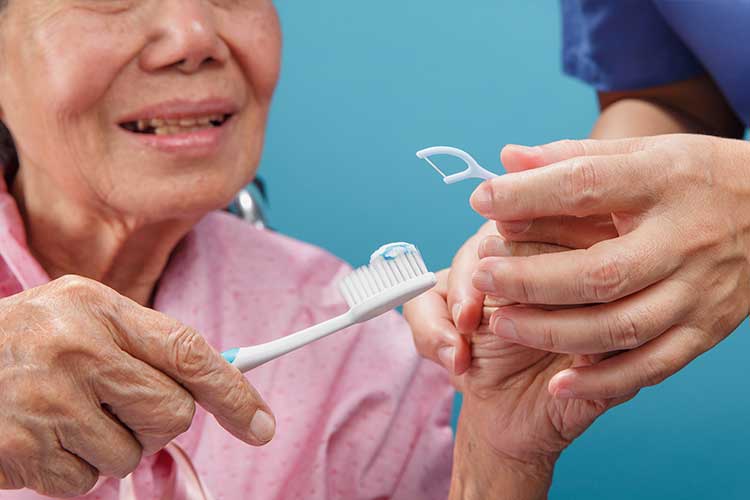
Strategies for preventing gum disease include:
- Gently brushing the teeth and gum line twice daily using fluoride toothpaste, even if it causes bleeding
- Using a toothbrush with a small head and soft bristles
- Flossing daily
- Visiting the dentist regularly
- Appropriately caring for dentures
- Avoiding smoking
- Maintaining blood sugar levels (for people living with diabetes)
- Avoiding consuming sugary foods and drinks, especially between meals
- Drinking an adequate amount of water (ideally fluoridated).
(Healthdirect 2023; Better Health Channel 2022)
Test Your Knowledge
Question 1 of 3
What is the primary cause of gum disease?
Topics
Further your knowledge
 Free
Free Free
Free
References
- Australian Institute of Health and Welfare 2020, National Oral Health Plan 2015–2024: Performance Monitoring Report, Australian Government, viewed 12 June 2025, https://www.aihw.gov.au/reports/dental-oral-health/national-oral-health-plan-2015-2024/contents/our-oral-health-a-national-perspective/periodontitis-prevalence
- Australian Institute of Health and Welfare 2024, Oral Health and Dental Care in Australia, Australian Government, viewed 12 June 2025, https://www.aihw.gov.au/reports/dental-oral-health/oral-health-and-dental-care-in-australia/contents/healthy-mouths
- Better Health Channel 2022, Gum Disease, Victoria State Government, viewed 12 June 2025, https://www.betterhealth.vic.gov.au/health/conditionsandtreatments/gum-disease
- Better Health Channel 2024, Teeth and Medication, Victoria State Government, viewed 12 June 2025, https://www.betterhealth.vic.gov.au/health/ConditionsAndTreatments/Teeth-and-medication
- Cleveland Clinic 2023, Gums, Cleveland Clinic, viewed 12 June 2025, https://my.clevelandclinic.org/health/body/24972-gums
- Gasner, NS & Schure, RS 2025, ‘Periodontal Disease’, StatPearls, viewed 12 June 2025, https://www.ncbi.nlm.nih.gov/books/NBK554590
- Healthdirect 2023, Gum Disease, Australian Government, viewed 12 June 2025, https://www.healthdirect.gov.au/gum-disease
- Healthdirect 2024, Gingivitis, Australian Government, viewed 12 June 2025, https://www.healthdirect.gov.au/gingivitis
- InformedHealth.org 2023, In Brief: How Does the Periodontium Work?, Institute for Quality and Efficiency in Health Care, viewed 12 June 2025, https://www.ncbi.nlm.nih.gov/books/NBK279619/
- Queensland Government 2022, Gum Disease, Queensland Government, viewed 12 June 2025, http://conditions.health.qld.gov.au/HealthCondition/condition/18/155/66/gum-disease
- Wu, B 2015, Gingivitis and Periodontitis, DermNet, viewed 12 June 2025, https://dermnetnz.org/topics/gingivitis-and-periodontitis/
 New
New 